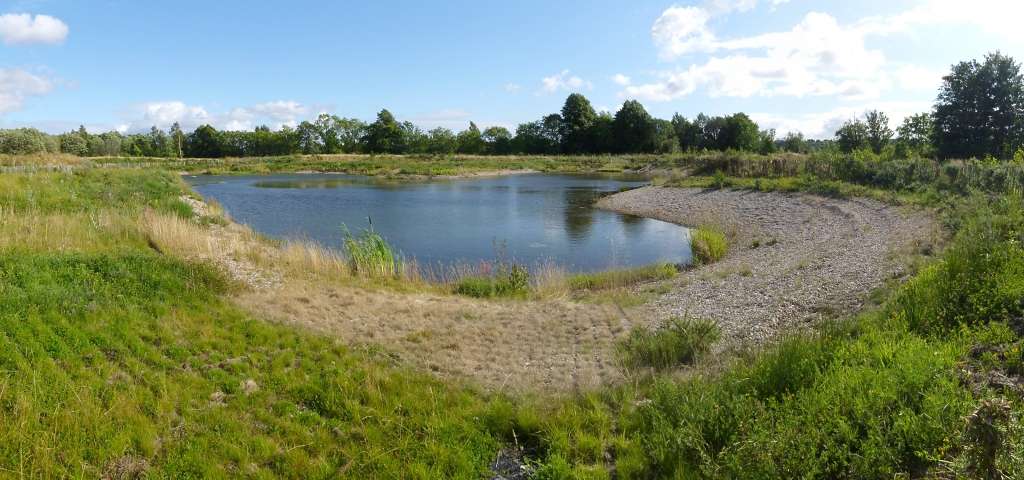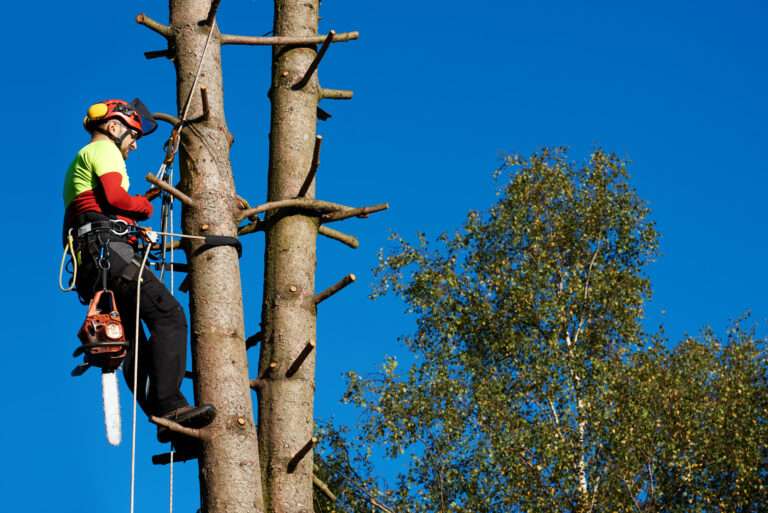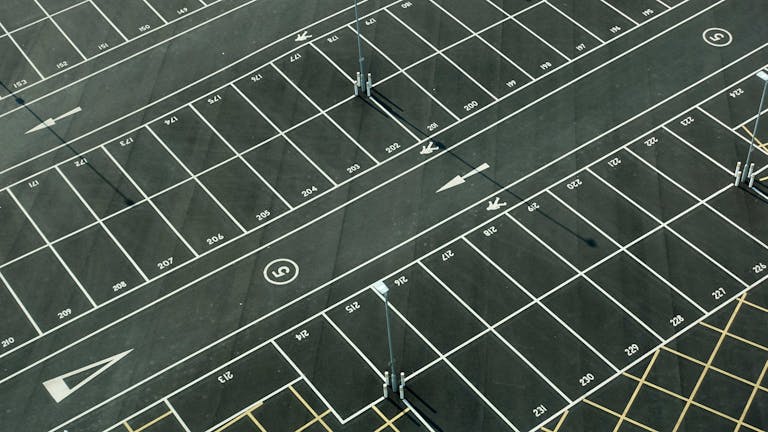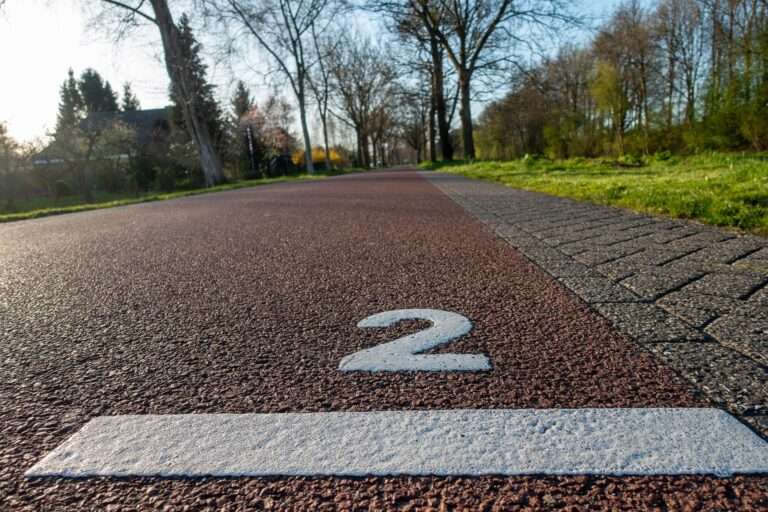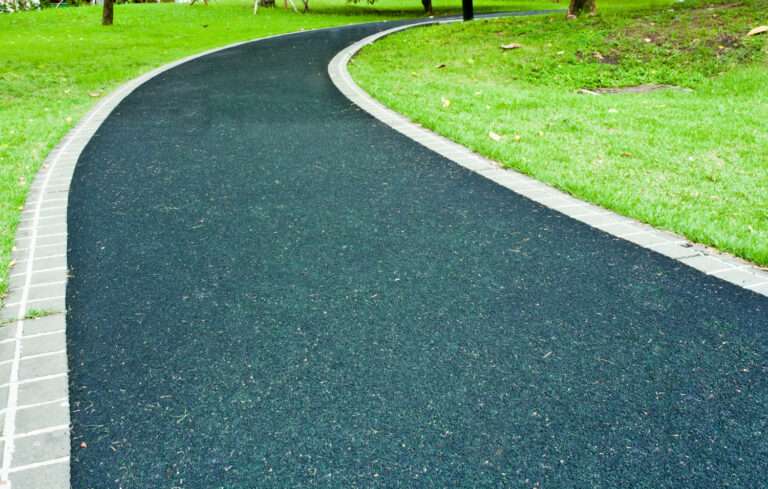Smarter Flood Protection: What Are Sustainable Drainage Systems (SuDS) and Why They Matter
Urban areas across the UK face an increasing challenge: how to cope with sudden, heavy rainfall. Traditional drainage systems often struggle, leading to flash flooding, damage to property, and disruption to daily life. Sustainable Drainage Systems (SuDS) provide a smarter, greener, and more reliable way of managing surface water.
But what exactly are SuDS, how do they work, and why are they becoming essential in modern developments? This article explores their role in protecting urban spaces, reducing flood risks, and creating healthier, more sustainable environments.
What Are Sustainable Drainage Systems (SuDS)?
Sustainable Drainage Systems, commonly known as SuDS, are a modern approach to managing rainwater in built environments. Instead of forcing water quickly into sewers and rivers, SuDS mimic natural processes, slowing water down, filtering it, and encouraging it to soak back into the ground where possible.
The goal is simple: to reduce flooding, improve water quality, and create green spaces that bring long-term benefits to people, wildlife, and the environment.
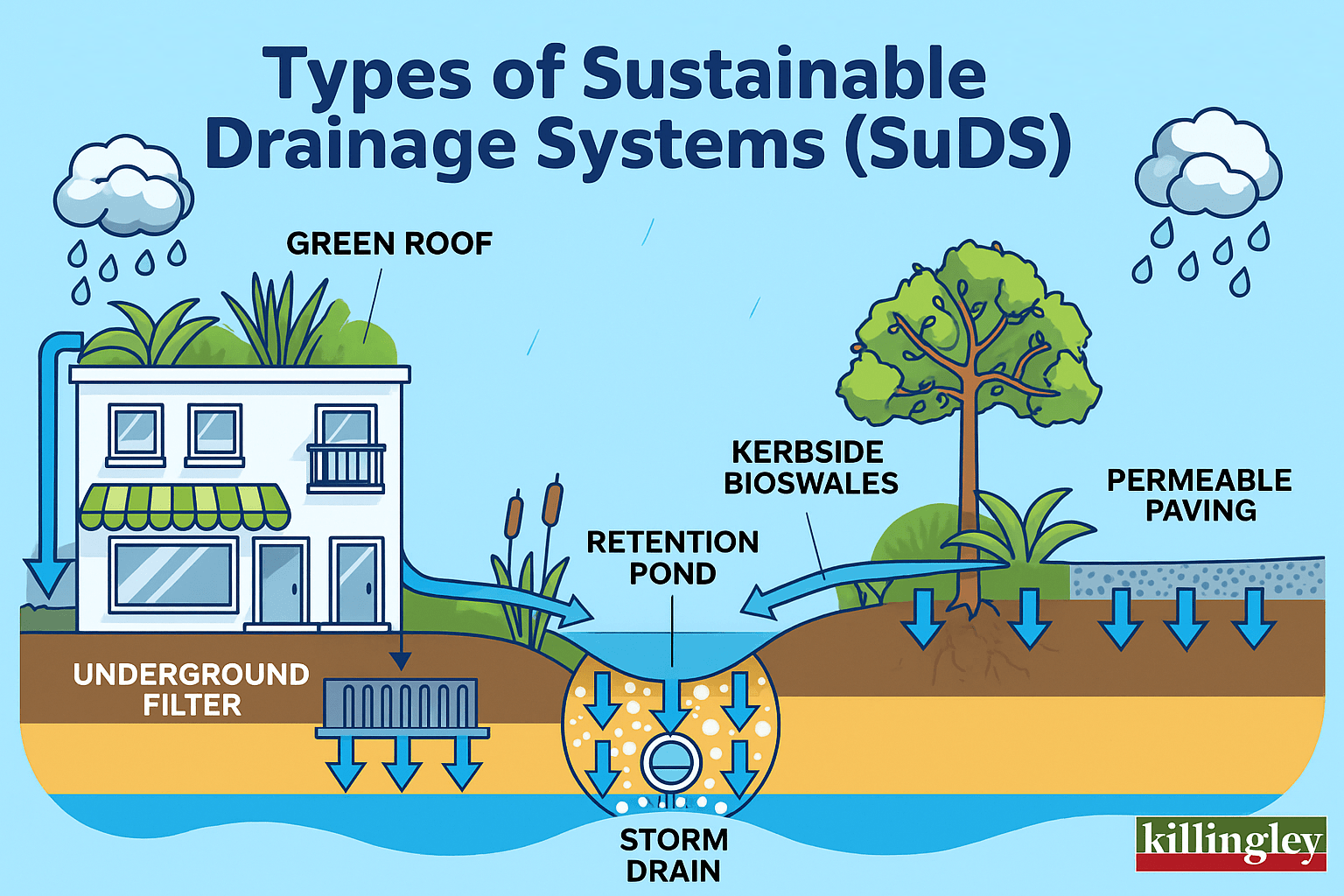
Why Traditional Drainage Falls Short
In urbanised areas, concrete, tarmac, and paving dominate. Unlike soil and vegetation, these surfaces cannot absorb rainfall. The result is a surge of surface water flowing straight into drains, which can overwhelm sewer networks and trigger flooding.
Common issues with traditional drainage:
- Overloaded sewers – unable to cope during heavy downpours.
- Increased flood risk – especially in urban centres with limited green space.
- Pollution – oils, litter, and chemicals washed directly into rivers.
- Erosion – fast-moving water damaging banks and watercourses.
SuDS solve these problems by introducing natural and engineered solutions that manage water in a safer, cleaner way.
The Key Benefits of SuDS
SuDS deliver more than just flood prevention – they transform communities.
| 🌍 Benefit | 💡 How It Helps |
|---|---|
| 🌧️ Flood Protection | Slows water flow, reducing pressure on drains and preventing flash floods. |
| 🌿 Environmental Quality | Filters out pollutants before water reaches rivers and streams. |
| 🐝 Biodiversity | Creates habitats for birds, insects, and aquatic life. |
| 🏡 Community Wellbeing | Green SuDS areas provide space for relaxation and recreation. |
| 📈 Property Value | Attractive, flood-resilient developments are more appealing to buyers. |
Popular Types of SuDS
Different SuDS approaches are suited to different spaces – from residential housing estates to commercial car parks and city centres.
Green Roofs
Vegetated roofs that absorb rainfall, reduce runoff, and improve air quality.
Permeable Paving
Surfaces designed to let water soak through instead of running off into drains.
Swales
Shallow, vegetated channels that slow and filter rainwater.
Retention Ponds
Basins designed to hold excess rainwater, reducing flood risk and providing habitats for wildlife.
Rain Gardens
Planted areas that capture water from roofs and pavements, letting it soak naturally into the ground.
Frequently Asked Questions About SuDS
Do SuDS completely stop flooding?
Not entirely. SuDS reduce the likelihood and severity of flooding by slowing water down and spreading it across multiple systems. While they can’t prevent every flood, they make urban areas far more resilient.
Are SuDS expensive to install?
Initial costs vary depending on the project, but SuDS often prove cheaper than traditional drainage when considering reduced flood damage, lower maintenance, and added community value.
Can SuDS work in city centres?
Yes. Even in heavily urbanised areas, features such as permeable paving, underground storage, and green roofs can significantly reduce surface water problems.
Do SuDS require a lot of maintenance?
Most SuDS are low maintenance. Tasks like clearing leaves from swales or checking permeable paving are simple and cost-effective compared to managing flood damage.
SuDS in Action: Protecting Urban Spaces
Picture a busy retail park with large car parks. In heavy rain, traditional drainage might struggle, causing deep puddles, traffic disruption, and water pollution. With SuDS, however, rain gardens absorb water from pavements, permeable paving allows water to soak through, and swales move excess water safely into holding ponds.
The result? A safer, more pleasant shopping environment with lower flood risk and added green spaces.
SuDS and Sustainability
SuDS align perfectly with the UK’s focus on climate resilience and biodiversity. By combining engineering with ecology, SuDS help cities and towns adapt to extreme weather events while supporting long-term sustainability goals.
They also connect with wider landscaping approaches – such as drainage and SuDS solutions that integrate with hard landscaping works – ensuring developments are robust, functional, and future-proof.
Why Businesses Should Care About SuDS
For property developers, councils, and commercial landowners, adopting SuDS isn’t just about meeting planning regulations – it’s a smart investment.
- Lower flood repair costs – Prevent damage to car parks, offices, and housing.
- Improved planning approval rates – Local authorities increasingly demand SuDS in new developments.
- Enhanced reputation – Show commitment to sustainability and community wellbeing.
- Increased customer appeal – People value green, safe, and attractive spaces.
Conclusion
Sustainable Drainage Systems (SuDS) represent the future of flood management in urban areas. By mimicking natural processes, they not only reduce flood risks but also improve biodiversity, enhance community wellbeing, and protect long-term investments.
For businesses, developers, and councils, SuDS are more than a planning requirement – they are a chance to future-proof projects, cut costs, and create greener, healthier spaces for everyone.
Killingley Insights is the editorial voice of NT Killingley Ltd, drawing on decades of experience in landscaping, environmental enhancements, and civil engineering projects across the UK.


